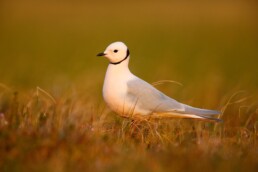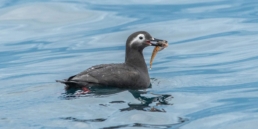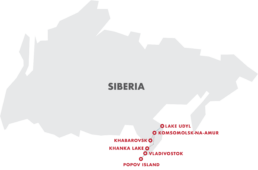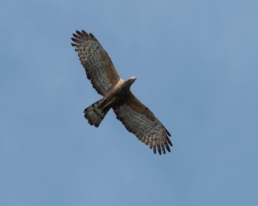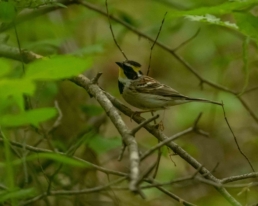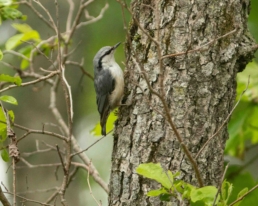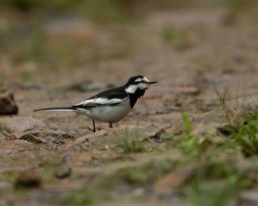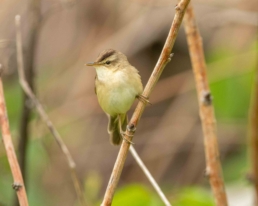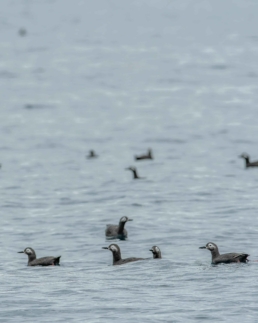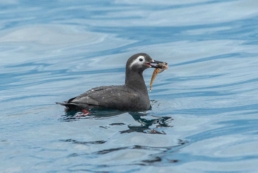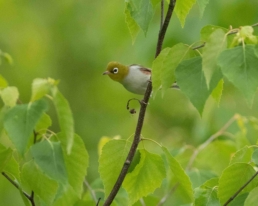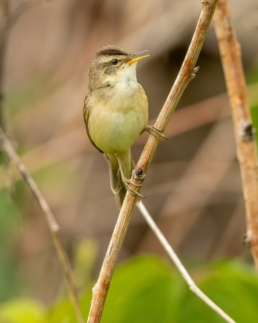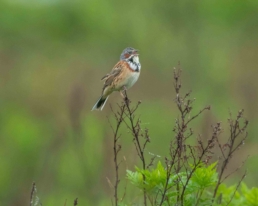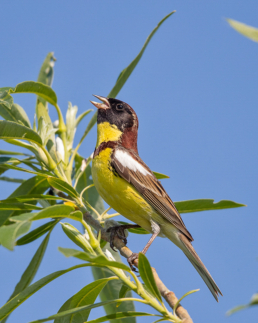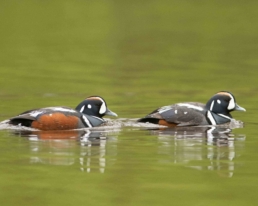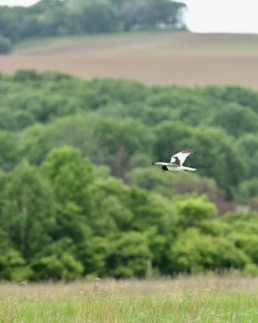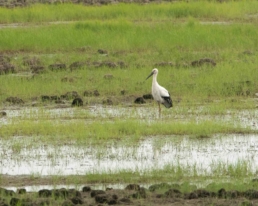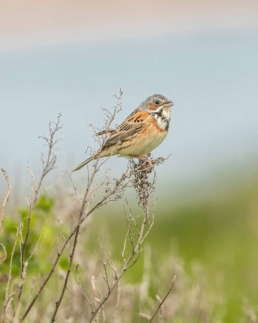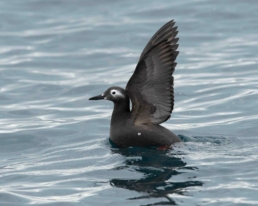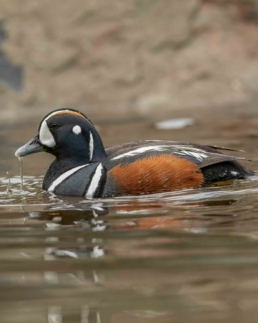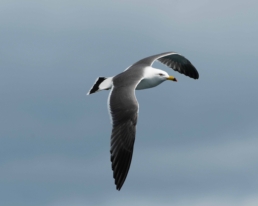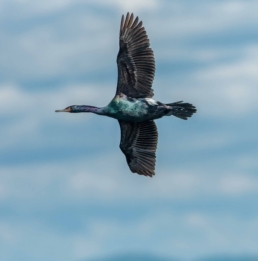Your Russia itinerary
Day 1: To Vladivostok in Russia
Clients depart from home towards the largest city in eastern Russia, Vladivostok. Clients need to be in Vladivostok in the early morning of day two. Please note that it is essential you arrive on time as we board our chartered vessel at 0530hrs on day two. For those who wish to arrive early, please contact the RBT office and we will gladly help you with extra hotel arrangements.
Night: Day 1, on aircraft.
Day 2 - 3: Popov Island & pelagic in Peter the Great Gulf
After an early morning domestic flight from Moscow to Vladivostok, we will immediately depart the airport for the large harbour of the historic city of Vladivostok. Over the coming two days, we will make pelagic trips in the Peter the Great Gulf and conduct several exciting landings on a few key islands in the Gulf. Several large seabird colonies will be an extravaganza and pure heaven for any birder. Amongst others, we hope to come across large amounts of Spectacled Guillemot, Rhinoceros Auklet, Black-tailed- and Slaty-backed Gulls, Temminck’s- and Pelagic Cormorant. Rarer sightings might include Marbled and Ancient Murrelet, Common Guillemot, Harlequin Duck, Swinhoe’s Storm Petrel or Streaked Shearwater. Cute Spotted Seals are often found sunbathing on rocks near the islands. As we are in the middle of migration time, we should encounter good waves of passerines.
Popov Island offers some excellent birding in the open grasslands that are full of flowers and butterflies. On the scouting trip in 2017 we came across many Chestnut-eared Buntings, (stejnegeri) Japanese Stonechat, Oriental Greenfinch, Grey-backed Thrushes, and, if we are lucky, we may bump into a Latham´s Snipe or Baikal Grasshopper Warbler. The forested parts of the island are full of Yellow-rumped Flycatchers, Pale-legged Leaf Warblers, Eastern Crowned Warblers, Ashy Minivets, Azure-winged Magpies, Japanese Pygmy Woodpeckers, and Japanese Tit. We will be greeted upon our return to Vladivostok each evening by swarming flocks of Pacific Swift. Back at our comfortable hotel, we will enjoy a flavorful dinner.
Night: Comfortable tourist hotel in Vladivostok
Day 4: Vladivostok to Lake Khanka
After breakfast we leave Vladivostok, driving towards the region of Khanka Lake, north of the city. We leave the coastal habitats behind and exchange them for extensive agricultural landscapes and taiga forests as far as the eye can see. In open areas, large numbers of the striking Pied Harrier will be quartering, as Brown Shrikes hunt from treetop perches. Enigmatic Siberian buntings like Elegant Bunting and Black-faced Bunting are found in some darker regions of the forests. In the evening, we will check out the wetlands of Khanka Lake in the hope of discovering Falcated and wild Mandarin Ducks, the latter being one of the most attractive duck species in the world.
Night: Hotel Voyage, Spassyk-Dalniy.
Day 5: Khanka Lake and surroundings
As usual on this tour, we will have an early rise to go birding in the nearby forests where many gems are on the menu. We will do our best to show you Asian Stubtail, Black-naped Oriole, Asian Paradise Flycatcher, Japanese Grosbeak and Azure Tit. Around noon there will be a significant dip in bird activity. We will use this time for an extended lunch and drive back towards Khanka Lake. In the evening we will explore the lake vicinity once more in the hope of the previously mentioned duck species and hopefully more sightings of Oriental Stork, Amur Falcon, and curious Black-browed Reed Warbler. In the evening we will drive to the village of Luchegorsk where we will lodge for the coming two nights.
Night: Tourist hotel, Luchegorsk
Day 6: Bikin River
Another early rise to reach a small, traditional Siberian village where we will board our three-person boats for an exploration of the Bikin River, sometimes called the Russian Amazon! It is an absolute delight to be on the river in the early morning with the sun just shining its first rays of light through the trees. This river is the best place for beauties like Scaly-sided Mergansers, Mandarin Duck and Long-billed Plover. The Mandarin Duck is an unmistakable, small duck and a big contender for the most beautiful duck on the planet. Large orange wing sails and whiskers combined with a coppery red, white and green head make it a real treasure to find in the Siberian wilderness. In the adjacent marshes, we hope to come across, amongst others, the Far Eastern Curlew and the endangered Oriental Stork. The latter has a small worldwide population of fewer than 2000 individuals. This is also an excellent spot for the elusive Forest Wagtail. Back in the village itself, Daurian Redstart, White-cheeked Starling and Oriental Reed Warbler are omnipresent. In the evening hours, we will bird the marshes around town where Eastern Marsh Harriers are seen along with hopefully more Falcated Ducks. At dusk, we will explore the river edges in the hope of hearing the territorial deep “boo” calls of the Blakiston’s Fish-Owl. We return to our hotel in Luchogursk late in the evening.
Night: Tourist hotel, Luchogursk
Day 7: Bikin River to Komsomolsk
Today will be mostly a travel day (700km, 9 hours), but we have some time in the morning to bird around the village, and near some of the marshes we visited the day before. One spot we have staked out will hopefully deliver a very pleasing Gray´s Grasshopper Warbler and lovely Grey-backed Thrush. In the late evening, we arrive at our tourist hotel in Komsomolsk-na-Amur.
Night: Tourist hotel, Komsomolsk-na-Amur
Day 8 - 11: Lake Idyl
Today we head for Lake Udyl where we will make some round trips of the lake to find the breeding and hopefully some hunting pairs of Steller’s Sea Eagle! These huge, striking raptors with their characteristic bright yellow beaks and white wing patches are our primary target during our stay at the lake. We have a good chance of close views as we travel by boat to several nesting sites staked out. On Lake Udyl we also hope to see the strange Swan Goose and the handsome Baikal Teal. In the nearby forests, Yellow-rumped Flycatcher, Dusky Warbler, Pallas’s Leaf Warbler, Oriental Greenfinch and Grey-bellied Bullfinch are common. On the third day, we head back towards Komsomolsk-na-Amur, where we expect to arrive in the early evening.
Nights day 08 – 10: Basic lodge at Lake Udyl
Night day 11: Tourist hotel in Komsomolsk-na-Amur
Day 12: Komsomolsk State Nature Reserve & transfer to Khabarovsk
At this state nature reserve, we are after one of the most sought-after grouse in the northern hemisphere; the Siberian Grouse! These small grouse are the only Russian endemic bird. They live in dense spruce forests with heavy understory. We will do our utmost best to find these attractive birds, and if we are fortunate enough to come across an individual, their trusting nature is hard to believe. They are a photographer’s dream! In this taiga forest, the endangered Black-billed Capercaille is also a big target. They occur in the same type of habitat as the grouse but are more challenging to locate. Other sightings in the forest may include Siberian Thrush, Mugimaki Flycatcher, Rufous-tailed Robin, Siberian Rubythroat, Red-flanked Bluetail, Arctic Warbler, Two-barred Greenish Warbler and Black-faced Bunting! Breeding Tristram´s Bunting is another highlight. In the evening we will have a lovely dinner in the city of Komsomolsk-na-Amur before we board an overnight train to Khabarovsk.
Night: Sleeper train to Khabarovsk.
Day 13: Khabarovsk marshes
Our train reaches Khabarovsk in the morning, ready for our final day of birding. In the extensive wetlands near Khabarovsk, we have a whole new set of birds to discover. In the open areas, the Lanceolated Warbler and Pallas´s Grasshopper Warbler are ubiquitously singing. The gorgeous and rapidly declining Yellow-breasted Bunting might be found nearby while a couple of Long-tailed Rosefinches are usually calling from willow scrub. A thick-billed Warbler would be one of the rare sightings of the day, but certainly possible. In the evening we check into our comfortable tourist hotel in Khabarovsk where we will enjoy a sizeable final dinner with a few shots of Vodka, just like the locals!
Night: Comfortable tourist hotel, Khabarovsk
Day 14: Khabarovsk to home
All participants will have a day room until 11am at our tourist hotel in Khabarovsk before transferring to the local airport and subsequent departure home.
Tour information
Focus
- Birds, including Pelagics
- Mammals
- Russian culture.
Group size
Min 6 - Max 10
The group will be always led by one birding leader and one assistant.
What's included in the Price?
All transport, including pelagics in Vladivostok and boating in Lake Idyl. All accommodations in twin rooming. All meals. All permits and national park entrances. Please note: Drinks, tips, possible visas and items of a personal nature including travel insurance, are not included.
Accomodation
Throughout the tour, we primarily use regular tourism hotels or lodges, all of which offer private facilities. On a few occasions, we may stay in basic lodges or hotels where shared facilities are encountered. In the larger cities, the hotels are very decent, and some are even rather lovely.
Difficulty
Our expedition to the Far East is moderately intensive. Given the long days, we take full advantage during our excursions. Typically, we start the day early with some birding, accompanied by a light snack and coffee. We return later in the morning for breakfast when bird activity slows down. Midday is often spent transferring to new birding areas or taking a short break, followed by more birding in the afternoon and evening.
We’ll be doing some walking, covering up to 4-5 km per day, so a moderate level of fitness is required to comfortably complete these walks. Weather-wise, we generally expect cooler temperatures, though in recent years, temperatures have occasionally risen to nearly 30°C.
As for mosquitoes, we recommend bringing adequate repellents, though the best protection is to cover exposed skin. While we do expect to encounter some mosquitoes, our early-season timing means the majority of them will appear later in the year.
Flights
International flights are not included in the pricing. Please connect with the RBT office to find out your best connection to Russia.
Clothing - What to pack?
For our expedition to Russia, it’s essential to pack a variety of clothing to accommodate the diverse climates and activities we’ll encounter. Lightweight, easily washable, and quick-drying clothes are crucial for potentially hot days in the taiga and during longer walks. Be sure to bring sunglasses and a sun hat for sun protection.
It’s also important to pack lightweight yet warm layered clothing for early mornings, especially when on the water, as temperatures can drop significantly. This should include a warm hat, fleece, and light gloves to keep you cozy. Additionally, a light waterproof jacket is recommended to shield against unexpected rain showers. For footwear, opt for lightweight yet sturdy walking boots that can handle various terrains.
Ready for your next adventure?
Reserve your spot on our Far East birding tour in Russia now.
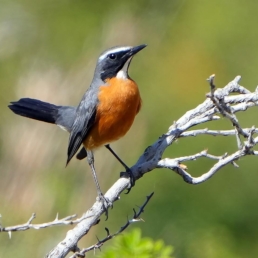
Related tours
From Altai Snowcocks to Mongolian Ground-Jays
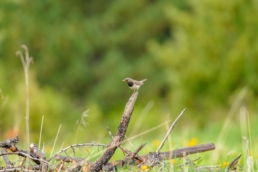
Ornithological expedition to Lake Baikal
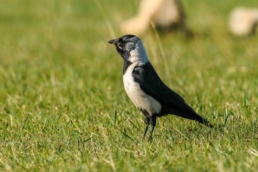
An expedition to the Indigirka Delta for Ross’s Gull & more
